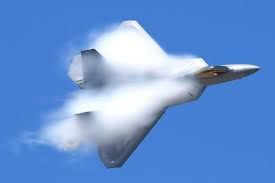Class 7 Exam > Class 7 Notes > Year 7 Physics (Cambridge) > Air resistance
Air resistance | Year 7 Physics (Cambridge) - Class 7 PDF Download
Introduction
When objects or people fall from a great height, they are pulled towards the Earth by gravity. As they fall, they experience acceleration due to gravity.
Acceleration and Terminal Velocity
- Acceleration: Initially, falling objects accelerate as gravity pulls them downwards.
- Terminal Velocity: Eventually, air resistance (drag force) increases with speed until it equals gravity's pull. This balance is called terminal velocity.
- Terminal velocity varies based on shape, size, and mass of objects.
- For humans, terminal velocity in freefall is approximately 120 mph (193 km/h).

Role of Parachutes
- Purpose: Parachutes are designed to increase air resistance by creating a larger surface area.
- Effect: This slows down the descent of objects or people, ensuring a safer landing.
- Mechanism: When deployed, parachutes open up, increasing drag force significantly.
- Example: A skydiver deploys a parachute to reduce speed and safely reach the ground.
Practical Application: Designing Parachutes
- Activity: Students can design and create parachutes for small objects to understand the concept of air resistance.
- Procedure: Use a stopwatch to time the descent of objects with and without parachutes.
- Example: Students can experiment with different parachute designs (size, shape) to observe their impact on descent speed.
Question for Air resistanceTry yourself: Which of the following best describes the role of parachutes in skydiving?View Solution
Conclusion
Understanding terminal velocity and parachutes is crucial for safe skydiving and engineering applications involving air resistance.
The document Air resistance | Year 7 Physics (Cambridge) - Class 7 is a part of the Class 7 Course Year 7 Physics (Cambridge).
All you need of Class 7 at this link: Class 7
|
14 videos|31 docs|9 tests
|
FAQs on Air resistance - Year 7 Physics (Cambridge) - Class 7
| 1. How does air resistance affect the motion of objects? |  |
Ans. Air resistance is a force that opposes the motion of objects through the air. It slows down the movement of objects by pushing against them in the opposite direction of their motion. This force increases as the speed of the object increases.
| 2. What factors determine the amount of air resistance experienced by an object? |  |
Ans. The amount of air resistance experienced by an object depends on various factors such as the shape and size of the object, the speed at which it is moving, and the density of the air. Objects with larger surface areas or irregular shapes experience more air resistance.
| 3. How can air resistance be reduced in order to increase the speed of an object? |  |
Ans. Air resistance can be reduced by making the object more streamlined or aerodynamic. This can be achieved by changing the shape of the object to minimize its surface area exposed to the air. Smoothing out any rough edges or adding fins can also help to reduce air resistance.
| 4. Does air resistance have a greater impact on larger or smaller objects? |  |
Ans. Generally, air resistance has a greater impact on larger objects compared to smaller objects. This is because larger objects have more surface area exposed to the air, resulting in more air resistance. Smaller objects have less surface area, so they experience less air resistance.
| 5. How does air resistance affect the trajectory of a projectile, such as a thrown ball? |  |
Ans. Air resistance can alter the trajectory of a projectile by slowing it down and causing it to deviate from its intended path. The amount of air resistance experienced by the projectile depends on factors such as its speed, size, and shape. This can lead to a curved or less predictable flight path.
Related Searches





















